Excerpts from Jim Conrad's
Naturalist Newsletter
from the September 29, 2013 Newsletter issued from the Frio Canyon Nature Education Center in the valley of the Dry Frio River in northern Uvalde County, southwestern Texas, on the southern border of the Edwards Plateau; elevation ~1750m (~5750 ft); N29.62°, W99.86°; USA
GRAZER GRASS
Much of our part of the Dry Frio River Valley is occupied by large fields behind tall deer fences and owned by a huge ranch. The fields are planted with robust, fast-growing grass that reaches waist high. The mowed grass is formed into large, wheel-like bales, removed and eventually fed to cattle. Despite this summer's heat and drought the grass grew astonishingly well, and a field sowed this spring and cut in the summer now is knee high with new shoots sprouting from the grass's base. I've been curious as to what kind of grass this is. Local folks call it Grazer Grass, but that term isn't mentioned on the Internet. I've itched "to do the botany," but all the plants have grown beyond reach behind the fence, and in this country the wise don't trespass a single foot onto ranchland.
However, one plant of the jillions in the field somehow came up so close to the fence that when it flowered this week I could reach through the fence and get some blossoms. Below, you can see the plant beside the field of knee-high sprouts issuing from stems cut a month or so ago, the camera held inside the fence:
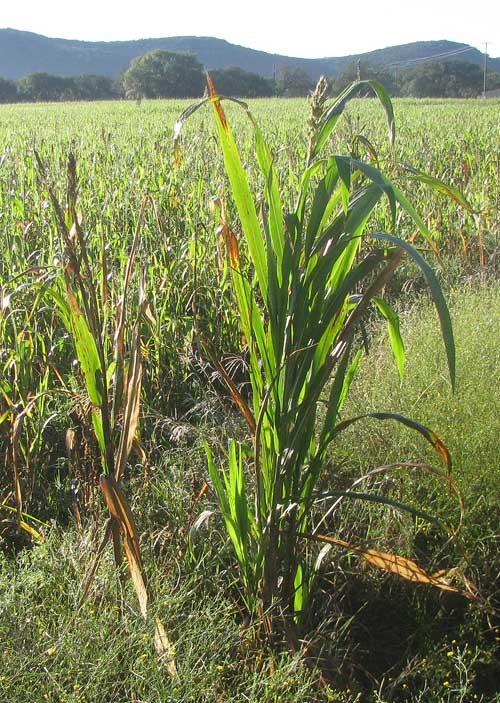
One field mark that shouldn't be forgotten when dealing with grasses is the "ligule," situated where the blade meets the stem. Some grass types don't have them, others have ligules looking like little cellophane walls between the blade and the stem, and still others are toothed, or composed of hairs. You can see what this grass's ligules looked like below:
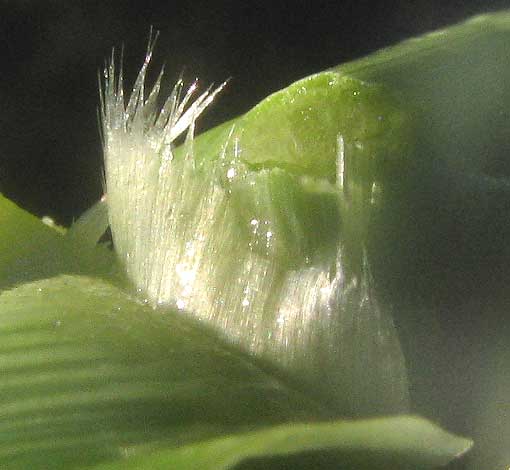
The grass's inflorescence is a congested panicle looking somewhat like a corn plant's tassel of emerging male flowers, as shown below:
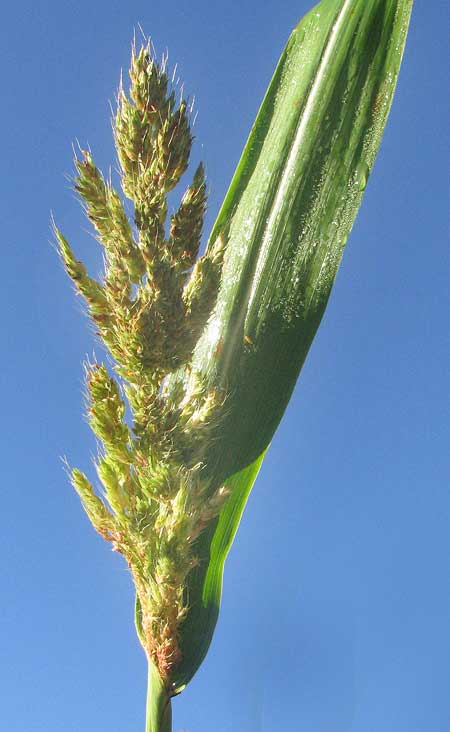
Up close you see that at least some of the florets are affixed with slender, sharp, needle-like "awns" that tend to curve and twist, as shown below:
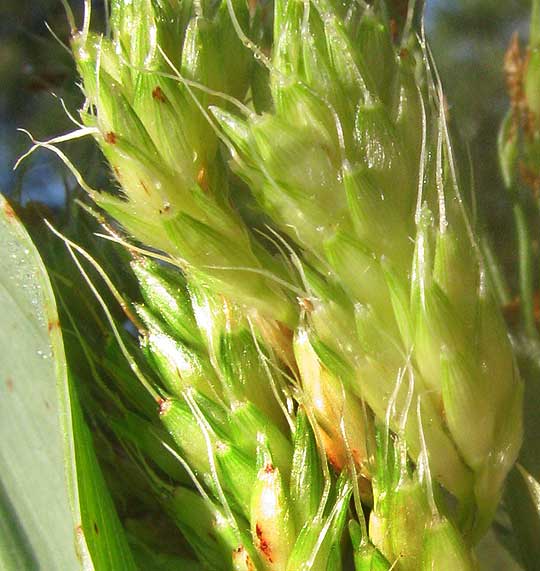
At tips of inflorescence branches the spikelets do something special that's diagnostic. You can see what happens below:
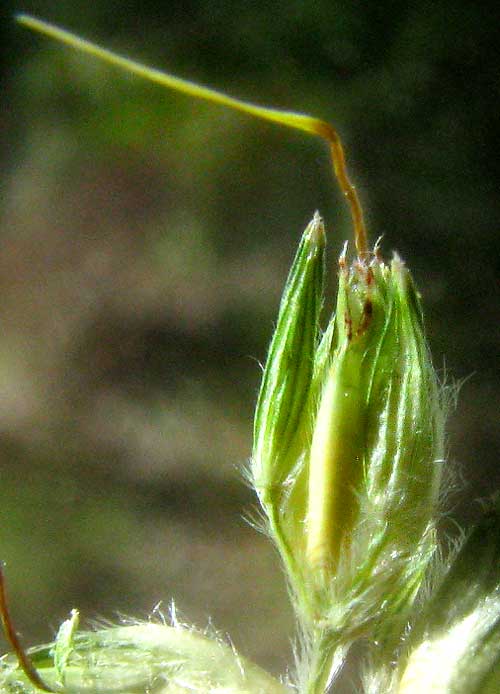
There you have three spikelets. The large, fertile one in the center with a brown, bent awn at its tip is accompanied by two smaller male spikelets, one on each side. Of course only the fertile one produces a grain, the male ones only producing pollen.
So, these are all features of Sorghum bicolor, one of the most important cultivated plants on Earth, because of its widespread use in tropical and subtropical areas as food for animals and humans, and for ethanol production. It's an African plant generally known as Sorghum, Forage Sorghum, Milo or a number of other names. Sorghum as a crop originated as far back as 3,000 years ago, and many cultivars have been developed.
Because our flowers don't seem to be producing the large, brown, exposed grains that mature flowers of regular Sorghum are known to produce, I suspect that our plant is a hybrid between Sorghum and Sudan Grass, Sudan Grass itself being both a member of the genus Sorghum, and a hybrid. It's Sorghum x drummondii.
The Sorghum x Sudan hybrid is much marketed as displaying "the regrowth capability of sudangrass but the yield potential of forage sorghum." The hybrid manifests itself in several distinct cultivars, such as the BMR 6-gene and BMR 12-gene types.
Traditional taxonomy fails to provide concise names for important cultivars such as this one. Sugar Grazer II is the commercial name of one such cultivar.